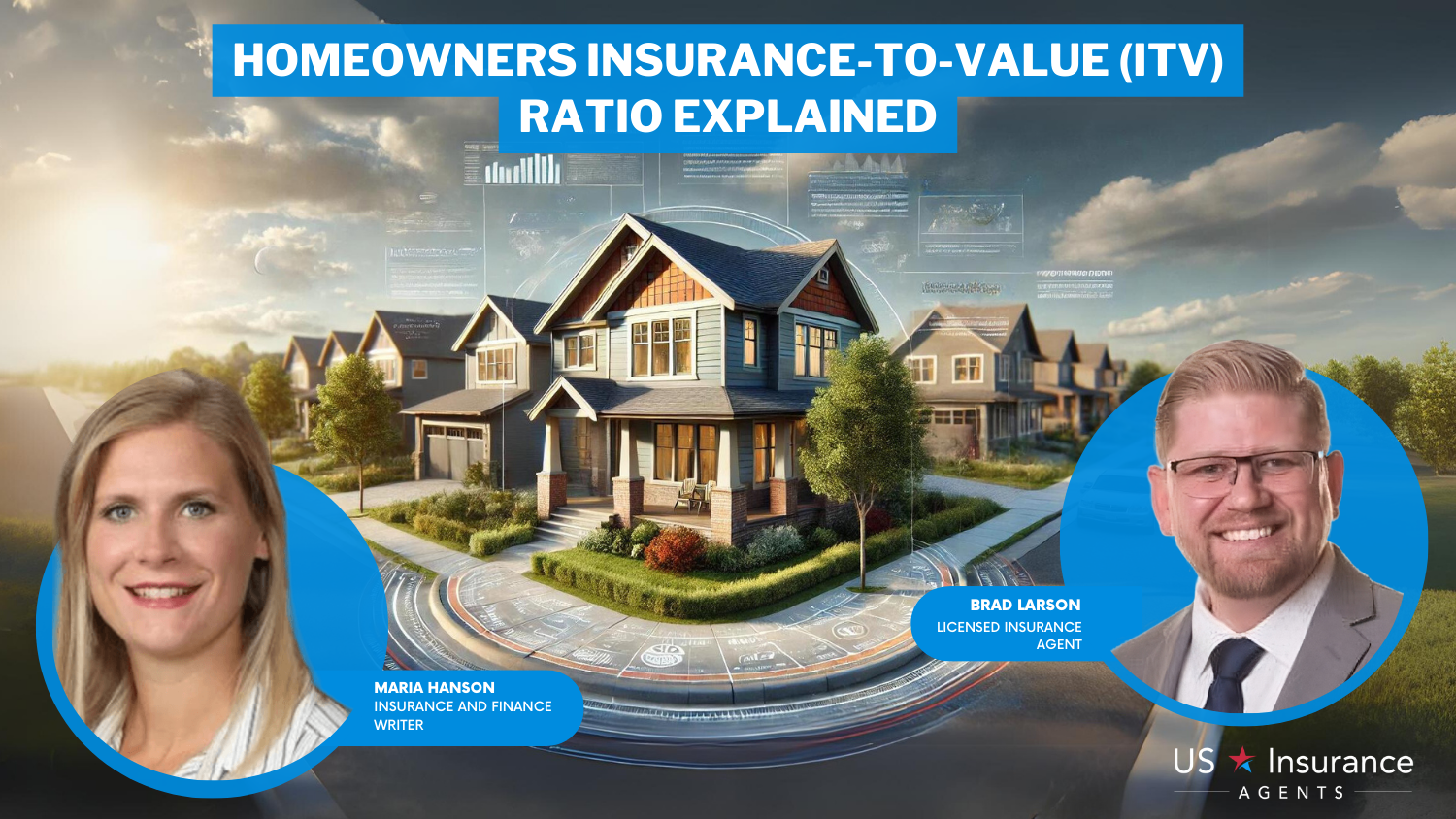Insurance-to-Value (ITV) Ratio: Homeowners Insurance Terms Explained (2025)
Demystifying the homeowners insurance-to-value ratio: a comprehensive guide to understanding its significance, calculating accurate coverage, navigating policy options, avoiding underinsurance risks, and making informed decisions for optimal home protection, financial security, and long-term peace of mind.
Read more Secured with SHA-256 Encryption





Table of Contents
Table of Contents


Insurance and Finance Writer
Maria Hanson grew up with a unique passion and understanding of both the automotive and insurance industries. With one grandfather in auto mechanics and another working in insurance, you could say automotive insurance is in her blood. Her love of research and finance serves her well in studying insurance trends and liability. Maria has expanded her scope of expertise to home, health, and life...
Maria Hanson


Sr. Director of Content
Sara Routhier, Senior Director of Content, has professional experience as an educator, SEO specialist, and content marketer. She has over 10 years of experience in the insurance industry. As a researcher, data nerd, writer, and editor, she strives to curate educational, enlightening articles that provide you with the must-know facts and best-kept secrets within the overwhelming world of insurance....
Sara Routhier


Licensed Insurance Agent
Brad Larson has been in the insurance industry for over 16 years. He specializes in helping clients navigate the claims process, with a particular emphasis on coverage analysis. He received his bachelor’s degree from the University of Utah in Political Science. He also holds an Associate in Claims (AIC) and Associate in General Insurance (AINS) designations, as well as a Utah Property and Casual...
Brad Larson
Updated January 2025
Unlock the secrets of homeowners insurance-to-value ratio with our detailed guide. Gain a deep understanding of this vital aspect to safeguard your home effectively.

Explore topics like calculating accurate coverage, mitigating underinsurance risks, and making informed decisions for comprehensive home protection and financial security. Don’t settle for inadequate coverage – take control of your home’s future today.
Enter your zip code to compare rates from top insurance providers and ensure your home is properly protected. Your peace of mind is just a few clicks away.
Case Studies: Insurance-to-Value (ITV) Ratio in Homeowners Insurance
The Insurance-to-Value (ITV) ratio is a crucial factor in determining the appropriate coverage for homeowners insurance. It represents the relationship between the insured value of a home and its actual replacement cost. To provide a better understanding of how the ITV ratio works in real-life scenarios, let’s explore some case studies:
Case Study 1: The Underinsured Home
Mr. and Mrs. Johnson purchased their dream home ten years ago. At that time, they insured the property for its market value, assuming it would cover the replacement cost as well. Unfortunately, they didn’t consider factors like inflation and the rising construction costs in their area. Last year, their home suffered extensive damage due to a fire. The insurance company determined the replacement cost to be significantly higher than the insured value, leaving the Johnsons with a substantial out-of-pocket expense.
Case Study 2: The Overinsured Home
The Smith family had been living in their home for several years when they decided to review their homeowners insurance policy. They had insured the property for an amount considerably higher than its replacement cost, as they were concerned about potential rising property values. While this may have provided them with a sense of security, they were paying unnecessary premiums for coverage they didn’t need. Adjusting their insurance policy to match the actual replacement cost resulted in substantial savings for the Smith family.
Case Study 3: The Newly Renovated Home
After investing a considerable amount of money in renovating their home, the Brown family realized their existing homeowners insurance policy might not adequately cover the increased value. They contacted their insurance provider to reassess the ITV ratio, taking into account the enhanced features and upgrades. By accurately estimating the replacement cost based on the renovations, the Browns were able to adjust their coverage accordingly, ensuring their investment was adequately protected.
Case Study 4: The Aging Home
Mr. and Mrs. Wilson had been living in their home for over three decades. As the years passed, the value of their property steadily increased, but they had not adjusted their homeowners insurance accordingly. When their home was severely damaged by a storm, they discovered that the insured value was significantly lower than the actual replacement cost. The Wilsons faced financial hardship as they had to cover a substantial portion of the repairs out of pocket. This case highlights the importance of regularly reviewing and updating homeowners insurance policies to reflect changes in the property’s value over time.
Case Study 5: The Newly Constructed Home
The Andersons were excited about their newly constructed home. As they shopped for homeowners insurance, they took the time to assess the replacement cost accurately. By considering the materials, construction quality, and local market prices, they obtained a policy that adequately covered the value of their home. In the unfortunate event of any damage, the Andersons could be confident that their insurance coverage would be sufficient to rebuild their new home.

Frequently Asked Questions
What is ITV in insurance?
How to calculate ITV insurance?
To calculate ITV insurance, divide the insured amount by the replacement cost of the property, then multiply by 100 to get a percentage.
Is homeowners insurance based on property value?
Homeowners insurance is based on the replacement cost of the property, not the market value.
What is ITV valuation?
ITV valuation is the process of determining the replacement cost of a property to ensure it is fully covered by insurance.
What is the acronym ITV in insurance?
The acronym ITV in insurance stands for Insurance-to-Value.
What is 100 ITV?
100 ITV means that the property is insured for 100% of its replacement cost.
What is an example of insurance to value?
An example of insurance to value is insuring a home for its full replacement cost, ensuring the insurance coverage equals the cost to rebuild the home from scratch.
What is the ideal ratio for insurance companies?
The ideal ratio for insurance companies is 100%, meaning the property is fully insured for its replacement cost.
What is the price to book ratio for ITV?
The price to book ratio for ITV is not typically used in insurance; it is more relevant in stock market evaluations.
What is ITV in legal terms?
In legal terms, ITV refers to the insurance-to-value ratio, which ensures adequate coverage of the property’s replacement cost.
What is the difference between ITV and TIV?
How much is ITV?
What funds ITV?
How to calculate insurance values?
What is actual value in insurance?
What is the meaning of insured value?
What is premium value in insurance?
Why is it important to have the correct Insurance-to-Value Ratio for your home?
How can I determine the replacement cost of my home?
Can my Insurance-to-Value Ratio change over time?
Are there any discounts available for maintaining a high Insurance-to-Value Ratio?
Does my homeowners insurance cover the contents of my home as well?
Are there any exclusions to homeowners insurance coverage?
Get a FREE Quote in Minutes
Insurance rates change constantly — we help you stay ahead by making it easy to compare top options and save.


